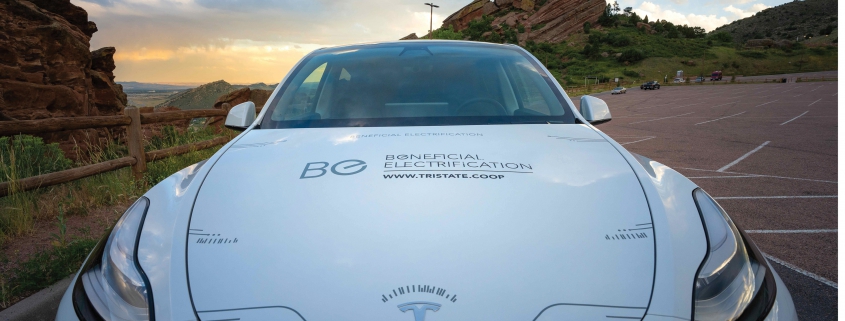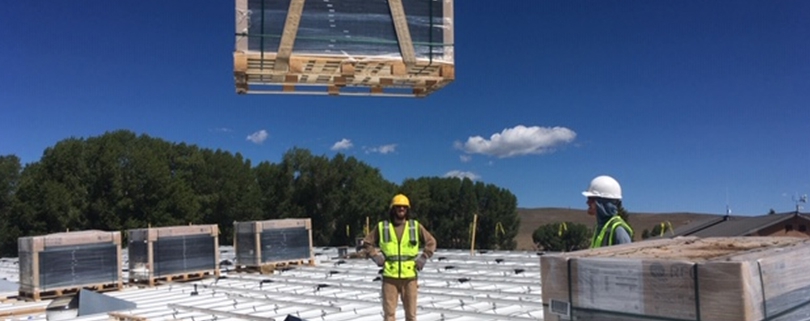As part of an ongoing discussion about electric vehicles with its member distribution cooperatives, Tri-State Generation and Transmission created the EV Experience, an innovative electric vehicle allowing co-op consumer-members to try out EVs.
Access to electric vehicles can be limited in the rural areas that Colorado’s distribution cooperatives serve; consumer-members can’t easily go to an EV dealership for a test drive. Tri-State found this was preventing consumer-members from engaging with EVs, so the power supplier decided to provide the experience through five EVs that can be loaned to Tri-State member cooperatives.
These co-ops can take one of two Tesla Model 3 EVs, a Tesla Model Y, a Chevy Bolt or an electric Pacifica Minivan for a month at a time. During that time, the co-op is encouraged to allow consumer-members and co-op staff to ride and drive the EVs, providing a first-time EV experience for many.
The program began in May, and has been “wildly successful,” according to Tri-State Beneficial Electrification Manager Matt Fitzgibbon. In the first month, 30-40 drivers got behind the wheel of an EV. Seven Colorado electric co-ops have participated so far. One co-op even had 17% of its membership participate in the EV Experience. Matt says there has been overwhelmingly positive feedback, such as, “I was interested in getting an EV, but I’m going to do it sooner” and “I though these things would be boring and not fun to drive, but I’m blown away.”
This fall, Holyoke-based Highline Electric Association took Tri-State’s Chevy Bolt and had 41 unique drivers during the month.
Highline’s Member Services Manager Tadius Huser said, “It’s an awesome program; it was good education for people.” Huser said that people were surprised at the minimal amount of maintenance EVs require. Though drivers were concerned about range, especially since it’s an “infrastructure desert” in northeastern Colorado, “Tri-State is doing good work to change that,” Huser said. Highline will install a dual-head Level 2 public EV charger at its headquarters by the end of the year with funds from a Charge Ahead grant from the Colorado Energy Office and funds from Tri-State. It is also exploring installing a DC fast charger someplace in its service territory.
“The primary goal [of the EV Experience] is to get people behind the wheel. This provides boots on the ground feedback to promote EVs and EV charging infrastructure,” Fitzgibbon said. A long-term goal is to bring EVs to member co-op annual meetings to “spark the conversation and have a well-rounded discussion about beneficial electrification.”
Tri-State has thought of everything during these unique times. Keeping safety and hygiene at the forefront, each EV Experience event has a car-specific sanitizing kit and all the materials needed to clean the EVs between drivers.
Highline’s EV Experience was well-received by its consumer-members and the co-op is gearing up to take Tri-State’s Tesla Model Y in January. The co-op is expecting even more member engagement with the all-wheel drive Tesla SUV.










